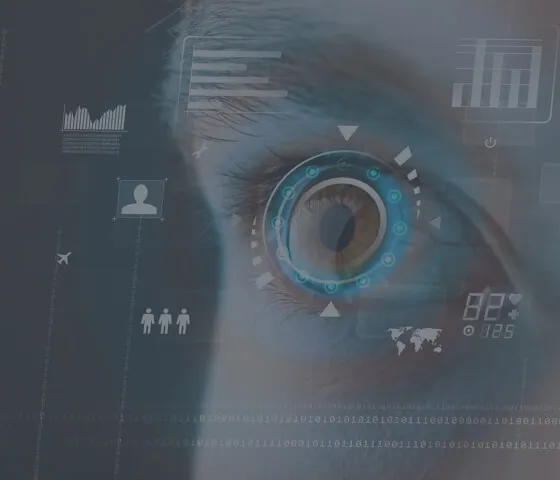
Edge AI for IoT Developers 
This online program provides developers with the skills to leverage edge computing and use the Intel® Distribution of OpenVINO to create high-performance applications for the Internet of Things (IoT). Participants will learn to develop and deploy AI-based solutions for edge devices. ▼
ADVERTISEMENT
Course Feature
![]() Cost:
Cost:
Paid
![]() Provider:
Provider:
Udacity
![]() Certificate:
Certificate:
No Information
![]() Language:
Language:
English
![]() Start Date:
Start Date:
Self Paced
Course Overview
❗The content presented here is sourced directly from Udacity platform. For comprehensive course details, including enrollment information, simply click on the 'Go to class' link on our website.
Updated in [March 06th, 2023]
This course provides an overview of Edge AI for IoT Developers. It covers the fundamentals of leveraging a pre-trained model for computer vision inferencing. Participants will learn how to use the model to detect objects, classify images, and recognize faces. They will also learn how to deploy the model on an edge device and optimize it for performance. By the end of the course, participants will have a better understanding of Edge AI and be able to use it to develop their own applications.
[Applications]
The application of this course can be seen in the development of Internet of Things (IoT) devices. By leveraging a pre-trained model for computer vision inferencing, IoT developers can create more efficient and accurate devices. Additionally, this course can be used to develop applications that can detect objects in real-time, such as facial recognition, object tracking, and motion detection. Furthermore, this course can be used to develop applications that can process data from multiple sensors, such as temperature, humidity, and pressure. Finally, this course can be used to develop applications that can analyze data from multiple sources, such as images, videos, and audio.
[Career Paths]
1. Edge AI Developer: Edge AI developers are responsible for developing and deploying AI models on edge devices. They must have a strong understanding of AI algorithms, computer vision, and IoT technologies. Edge AI developers must also be able to optimize models for low-power and low-latency performance. As the demand for AI-enabled IoT devices increases, the need for edge AI developers will continue to grow.
2. IoT Software Engineer: IoT software engineers are responsible for developing and maintaining software for IoT devices. They must have a strong understanding of software engineering principles, as well as experience with embedded systems and IoT protocols. As the demand for connected devices increases, the need for IoT software engineers will continue to grow.
3. Data Scientist: Data scientists are responsible for analyzing and interpreting data from IoT devices. They must have a strong understanding of data analysis techniques, as well as experience with machine learning and AI algorithms. As the amount of data generated by IoT devices increases, the need for data scientists will continue to grow.
4. Cloud Architect: Cloud architects are responsible for designing and deploying cloud-based solutions for IoT devices. They must have a strong understanding of cloud computing technologies, as well as experience with distributed systems and IoT protocols. As the demand for cloud-based IoT solutions increases, the need for cloud architects will continue to grow.
[Education Paths]
1. Bachelor of Science in Computer Science: This degree path provides students with a comprehensive understanding of computer science fundamentals, including programming, algorithms, data structures, and software engineering. It also covers topics such as artificial intelligence, machine learning, and robotics. With the increasing demand for Edge AI for IoT developers, this degree path is becoming increasingly popular.
2. Bachelor of Science in Electrical Engineering: This degree path focuses on the design and development of electrical systems, including embedded systems, microprocessors, and communication networks. It also covers topics such as signal processing, control systems, and computer architecture. With the increasing demand for Edge AI for IoT developers, this degree path is becoming increasingly popular.
3. Master of Science in Artificial Intelligence: This degree path provides students with a comprehensive understanding of artificial intelligence, including machine learning, deep learning, and natural language processing. It also covers topics such as robotics, computer vision, and data mining. With the increasing demand for Edge AI for IoT developers, this degree path is becoming increasingly popular.
4. Master of Science in Robotics: This degree path provides students with a comprehensive understanding of robotics, including robot design, control systems, and motion planning. It also covers topics such as artificial intelligence, machine learning, and computer vision. With the increasing demand for Edge AI for IoT developers, this degree path is becoming increasingly popular.
Course Syllabus
Convert pre-trained models into the framework agnostic intermediate representation with the Model Optimizer
Course Provider

Provider Udacity's Stats at AZClass
Discussion and Reviews
0.0 (Based on 0 reviews)
Explore Similar Online Courses

Basic Concepts in Education

Analog Portrait Photography: Creating Unique Atmospheres

AI Companions: Social Impact - How tech like ChatGPT virtual companions and robots will change us

AI art with Blender and Stable Diffusion w& midjourney Model

EASY Offline Stable Diffusion Model Training make your own custom LoRA with Kohya simple process!

Ultimate Stable Diffusion AI art Course (beginner to pro)

Stable Diffusion Deforum: Going Viral on TikTok & Instagram

Stable Diffusion 101 : Beginners Guide To Building AI Art

Stable Diffusion Masterclass: AI Assisted Art Generation

Introduction to Stable Diffusion for Developers & Designers

ULTIMATE FREE LORA Training In Stable Diffusion! Less Than 7GB VRAM!

Reference Only - ControlNet Method - WOW! You NEED this NOW!
 Related Categories
Related Categories
 Popular Providers
Popular Providers
Quiz
 Submitted Sucessfully
Submitted Sucessfully
1. What type of model is used in Edge AI for IoT Developers?
2. What type of inferencing is used in Edge AI for IoT Developers?
3. What is the main purpose of Edge AI for IoT Developers?
4. What is the purpose of Edge AI for IoT Developers?
Correct Answer: To leverage a pre-trained model for computer vision inferencing.


Start your review of Edge AI for IoT Developers